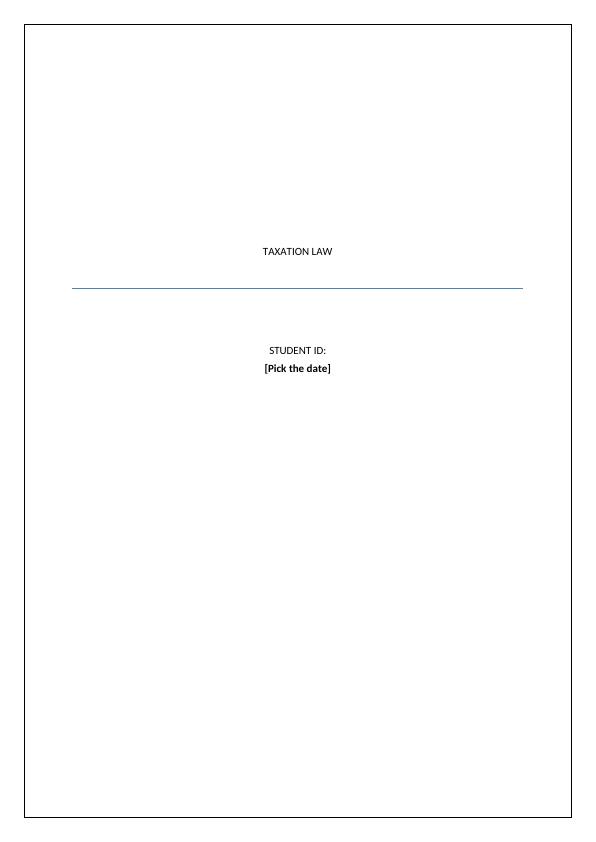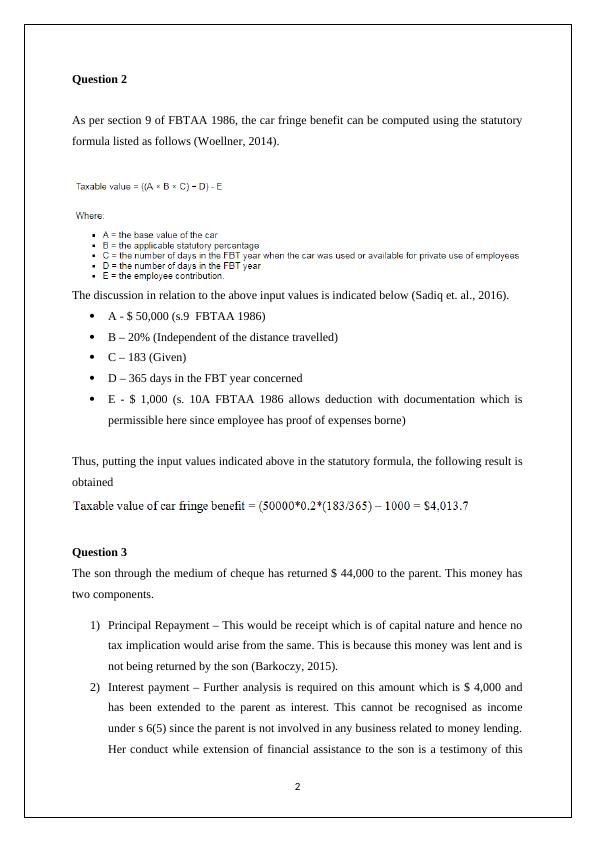Taxation Law: Analysis of Payments, Car Fringe Benefit, Capital Gains Computation
Added on 2023-06-11
6 Pages1254 Words306 Views
End of preview
Want to access all the pages? Upload your documents or become a member.
Taxation Law ITAA 1997 - Doc
|6
|1596
|50
Assignment - Taxation Law (Solution)
|7
|1892
|87
Taxation Law - Study Material with Solved Assignments, Essays, Dissertation
|6
|1330
|437
Taxation Law: Payments from personal exertion, car fringe benefit, financial assistance, and CGT computation
|7
|1916
|196
Analysis of Payments under Taxation Law
|8
|2342
|172
Taxation Law: Personal Exertion Income, Car Fringe Benefit, Capital Gains Tax, and Gift Tax
|7
|1900
|277



